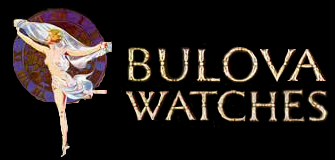The techinque with out using a hairspring vibrator...This is something i really would like to learn.1 because if i ever ruin a hairspring,i would be like to repair it...2 To just have the know how and the skill and 3 to repair watches that have bad hairsprings with out buying a parts movement...Has anyone have and tips on where there is good instruction on doing this...has anyone tried this before...i know where to get blank hairsprings which are kinda cheap....any help i will be extremely grateful for on how to start learning and working on this....
Although I prefer to use a vibrating tool, there are not a lot of these around anymore, and there is a way to do it without one. Although I read through the Bulova course while at school, I don't remember what the procedure is according to them. What I assume you're after here is determining the mounting point on a replacement or new hairspring. Too long, and it's too slow, too short, and it's too fast, you get the idea.
What you do, is get a watch with a second hand that you know is running correctly and timed well, and lay it flat on the bench. After placing the hairspring with new collet on the balance staff and wheel, grip the spring with your tweezers, and let the balance dangle, coming to rest on the crystal of the watch. Give the balance a slight twist to start it, and observe as one of the arms comes towards you, this is an alternate vibration. Get ready to start the swing and count as the second hand of the reference watch approaches 60, or any easy to use mark. Most of these old watches are 18000 V/H, so of course your reference watch must be the same. 18000 is 300 vibrations per minute, and 150 alternate vibrations. This means 75 alternate vibrations in 30 seconds.
Start the balance swinging and start the count at the 60 mark. You count up to 75 and the second hand of the reference watch should be at the 30 second mark. If it is too slow, take up more of the spring and try again. Too fast, and back off closer to the end of the spring. Obviously, if it is too fast even when at the end of the spring, your spring has been cut too short at some point and is useless. The spot at which the balance swings 75 alternate vibrations at exactly thirty seconds is the spot where your regulating pins will be, and the stud can be attached further out, depending on the balance, around 4mm or so, but again, this will be dictated by your balance cock design, how large the calibre is. Keep in mind that not all balance springs are alike, and if you have to reproduce the overcoil, I recommend finding one that already has one, as these are not easy to do without training. Some balance springs also have a small dogleg after the regulating pins, and this is part of the design of the balance, and must also be reproduced, or your balance will not be centred, and will not run properly at all. Of course, a proper timing machine is indispenible, to correct for beat error and quickly ascertain rate. Cheap ones can be had from TimeGrapher and on eBay for about $250, and are good enough for a reference, or for anyone who doesn't want to spend thousands on a Witschi.
I can recommend DeCarle's 'Practical Watch Timing' for those brave enough to start experimenting with balance springing and timing.
